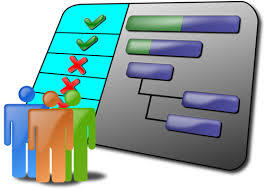
There are several benefits of using Gantt charts in project management that can help you to improve your project performance. Here are the ones we consider key:
- Visual representation of project schedule: A Gantt chart provides a clear and easy-to-understand visual representation of the project schedule. It allows stakeholders to see the overall timeline, dependencies between tasks, and critical path activities.
- Improved communication: Gantt charts communicate project status and progress to stakeholders, team members, and management in a very efficient way. The chart helps everyone involved in the project to understand the timeline and expectations, and to identify potential issues or delays.
- Resource allocation: By identifying dependencies and critical path activities, a Gantt chart can help to optimize resource allocation. Consequently, ensuring that the right resources are available at the right time to complete each task.
- Risk management: Gantt charts can help to identify potential risks or delays in the project schedule. Hence, allowing stakeholders to develop contingency plans and mitigation strategies to minimize the impact of these risks.
- Improved collaboration: Gantt charts facilitate collaboration and coordination among team members. Particularly, it ensures that everyone understands their roles and responsibilities and helps coordinate the completion of works on time.
- Monitoring progress: Gantt charts provide a way to track progress against the project schedule, allowing stakeholders to identify and address issues as they arise and to make adjustments to the project plan as needed.
In short, the benefits of using Gantt charts make them an excellent tool that can improve project planning, communication, coordination, and control, leading to more successful project outcomes.
Now that you are familiar with the benefits of gantt chart for project management start using Gantt charts today with Ganttasizer, the best solution for creating Gantt charts in Excel.



